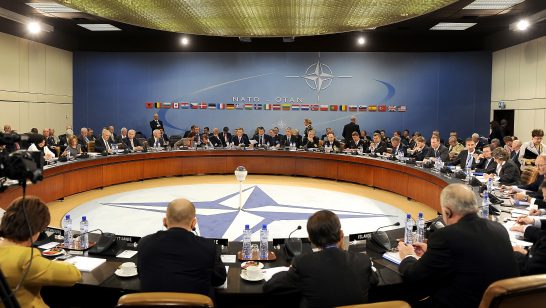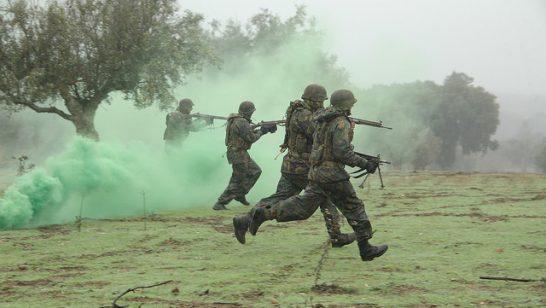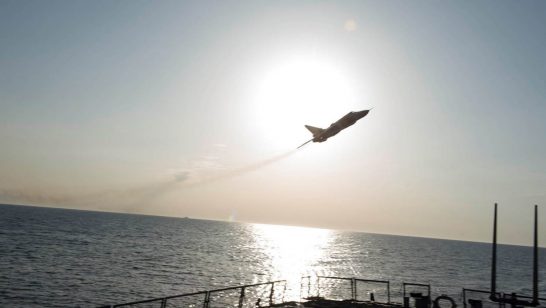
Here’s a dilemma encountered by generations of parents: There is a bully in your child’s school. Do you tell your child it is better to try to work with the bully, to avoid ugly confrontations, or stand up to them and show that bullying is unacceptable?
Current geopolitics involving Russia bears strong resemblance to this schoolyard bully situation, and this is especially true of the Baltic Sea region, acutely exposed to Russian aggression.
Indeed, so far, Russian aggression has largely taken place not on land but on water, for example, Russian warships bothering construction crews laying the NordBalt cable between Lithuania and Sweden, or in the air, with NATO’s Baltic Air Policing regularly having to scramble in response to approaching Russian aircraft. Sweden and Finland likewise are frequently subject to near-air incursions by the Russian air force. So how to respond to the behaviours of a neighbour arguably stronger than the other eight surrounding the Baltic Sea?
While Estonia and Poland have taken a strong stance against Moscow, their neighbours have opted for a variety of other approaches: Latvia pursues a strong pro-NATO strategy whilst simultaneously hoping to engage Russia in dialogue. Swedish voters cannot decide whether their national security interests compel them to join NATO, or if NATO membership, on the contrary, would be a foolish act of provocation towards Russia. In Finland, meanwhile, a clear majority of voters oppose NATO membership and President Sauli Niinistö is presented as “the West’s” de facto link to Russia, regularly holding talks with President Vladimir Putin and hosting the Putin-Trump July summit (earlier in the year, however, Finland and Sweden did sign a defence cooperation agreement with the Pentagon). As for Germany, when it comes to Russia the Baltic Sea’s giant is deeply schizophrenic. Germany leads NATO’s Enhanced Forward Presence battlegroup in Lithuania and participates in sanctions against the Kremlin, while grappling with the fact that 58 percent of its electorate supports improved relations with Russia. Hopeless, it seems.
Here’s the thing: despite their undeniable differences, the Baltic Sea countries – especially the Nordic and Baltic ones – have over the past couple of decades managed to build enviable security cooperation. In the early years after the Cold War, the Nordic countries sold military equipment to their Baltic neighbours at very friendly prices, or sometimes even gave them away for free. It was a win-win. During the Cold War, Nordic countries – especially Sweden – had had exceptionally strong armed forces but now, with the Cold War over, had become a keen believer in the peace dividend. Sweden had large amounts of defence equipment to dispose of, and the Baltic States were keen to build a credible defence against their former occupier. Sweden thus shipped enormous quantities of equipment to the Baltic states, accompanied by Swedish officers who trained their Baltic colleagues. As a result, today the Baltic states armies are to a large extent based on Swedish equipment and expertise.
You will not find these close military-to-military relationships listed in any organisational overview on deterrence in the Baltic Sea region. But they are real. So is Sweden and Finland’s highly pragmatic defence integration, where gradual steps will, for example, see each playing the red side during exercises, having access to the other country’s airfields, and even have soldiers serve under commanders from the partner country.
The entire region’s participation in the UK-led Joint Expeditionary Force, too, is a pragmatic step that further strengthens the neighbours’ cohesion. (Poland has not joined the JEF.) And while Nordic-Baltic 8 (NB8), a forum for cooperation between parliaments and ministries, is virtually unknown outside the Baltic Sea region, it too aids foreign and security policy cohesion in the region.
There is no Baltic Sea Treaty Organisation, and neither should there be one. The majority of the region’s countries are enthusiastic members of NATO, and Sweden and Finland are equally enthusiastic partners. But what the Baltic Sea neighbours – sometimes including Poland, sometimes not – have achieved is a remarkable deterrent power based on extensive cooperation. And because that cooperation is based on trust, it extends beyond the formal extents of the various bodies to which the neighbours belong.
Throughout the ages, countries’ leaders have, of course, maintained trust-based relationships. But the beauty of the Baltic Sea neighbours’ arrangement is that it’s not just one overarching organisation, or just a matter of trust between leaders, but a multitude of organisations and groupings. Institutional and personal relationships create unity—and unity means deterrence. If the Baltic Sea countries, with their extremely different 20th-century fates, can create such unity, it should be possible in other regions as well.
Better yet, it can happen within NATO. Every now and then the idea comes up of abandoning NATO’s rule of unanimity and allowing member states to team up in regional groups for particular actions – because threat scenarios look very different on the Iberian peninsula compared to, say, Poland. Such changes may well become necessary. But deepening regional cohesion would be a good first step, precisely because it would increase deterrence. Lack of unity has an ability to undermine even the most ambitious military investment.
To go back to the schoolyard: the best approach is to band together against the bully.
The opinions articulated above also do not necessarily reflect the position of the European Leadership Network or any of its members. The ELN’s aim is to encourage debates that will help develop Europe’s capacity to address pressing foreign, defence, and security challenges.



